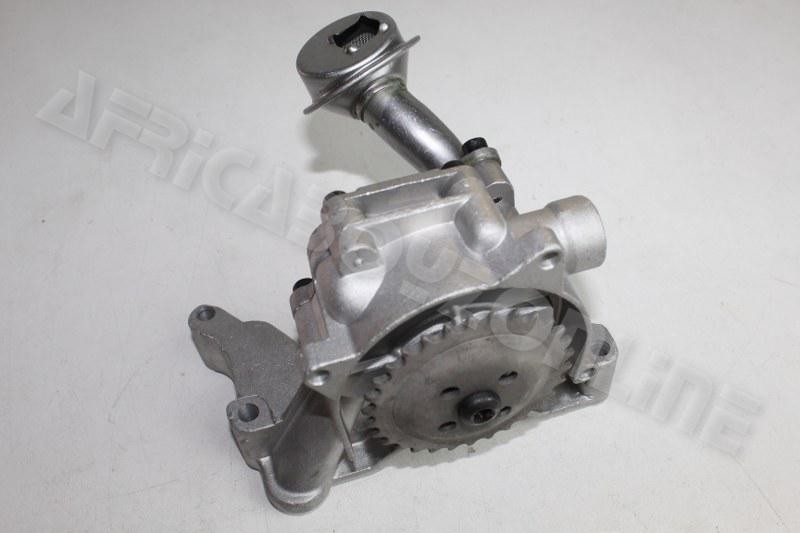Lower downtime by using a well-maintained clp engine.
Lower downtime by using a well-maintained clp engine.
Blog Article
How a Clp Engine Can Improve Efficiency in Different Industries
The introduction of CLP engines notes a significant change in operational efficiency across various fields, driven by their capability to maximize gas intake and lessen downtime. Industries such as production and logistics stand to acquire considerably from their durable style and consistent power output, which guarantee to improve procedures and improve performance. As companies significantly prioritize sustainability together with efficiency, the role of CLP engines ends up being much more important. What stays to be seen is how these developments will shape the future landscape of industrial procedures and their impact on wider economic patterns (clp engine).
Review of CLP Engines
CLP engines, or Constant Liquid Propellant engines, represent a significant development in propulsion technology, specifically for room applications. These engines utilize a continuous feed system that permits for the sustained expulsion of propellant, resulting in improved effectiveness and efficiency compared to typical strong or hybrid propulsion systems. By maintaining a constant flow of fluid propellant, CLP engines can accomplish a lot more specific thrust control, which is important for navigating spacecraft in numerous goal situations.
The design of CLP engines incorporates innovative materials and innovative gas monitoring systems. clp engine. This leads to reduced weight and raised integrity, necessary aspects for long-duration room goals. The continuous procedure lessens the threat of combustion instability, a common difficulty in traditional rocket engines.

Advantages in Manufacturing
The manufacturing of Constant Liquid Propellant (CLP) engines provides numerous noteworthy advantages that boost both effectiveness and cost-effectiveness. Among the primary benefits is the streamlined manufacturing procedure, which lowers the complexity connected with standard propulsion systems. By making use of fluid propellant, makers can attain higher accuracy in engine efficiency, leading to enhanced energy outcome and minimized waste.
Furthermore, CLP engines facilitate a greater degree of modularity, permitting less complicated assimilation right into various production lines. This adaptability can substantially decrease preparations and enhance overall operational versatility. Using CLP modern technology additionally has a tendency to lessen the need for substantial maintenance as a result of less relocating parts, which equates into decreased downtime and operational costs.

Applications in Logistics
Leveraging Constant Liquid Propellant (CLP) engines in logistics supplies substantial benefits in functional effectiveness and integrity. These engines provide a robust remedy for different you could try here transport requirements, making it possible for the seamless motion of products across substantial ranges. The intrinsic design of CLP engines allows for regular power result, which converts right into smoother and extra predictable transport routines.
Among the key applications of CLP engines in logistics remains in sturdy products transportation, where they can drive both ground and airborne vehicles. Their ability to maintain high performance under differing load problems makes sure that delivery timelines are satisfied, thereby enhancing consumer contentment. Furthermore, CLP engines can be incorporated into automated logistics systems, facilitating real-time tracking and optimizing path planning.
In addition, the toughness of CLP engines reduces upkeep downtime, allowing logistics business to optimize their operational abilities. This is particularly useful in warehousing operations, where performance in managing and delivering goods is important. As logistics continues to advance, the assimilation of CLP engines represents a forward-thinking technique that not only improves efficiency yet likewise supports the sector's expanding needs for dependability and rate.
Influence On Energy Efficiency
How do Constant Fluid Propellant (CLP) engines enhance power efficiency in transport? CLP engines utilize a constant circulation of liquid fuel, enhancing combustion processes and preserving a stable thrust output. This layout minimizes energy losses connected with traditional combustion engines, where gas delivery can vary and bring about inefficiencies.
The continual procedure of CLP engines enables for a more effective thermal cycle, causing greater certain impulse compared to traditional engines. clp engine. This translates to lowered gas usage for the same quantity of work done, significantly reducing operational costs throughout various transportation industries, including air travel and maritime sectors
Moreover, the ability of CLP engines to keep optimal find out this here performance under varying lots conditions decreases the need for frequent acceleration and deceleration, additionally enhancing gas efficiency. Enhanced power efficiency not just adds to cost savings but additionally brings about reduce greenhouse gas discharges, aligning with international sustainability objectives.
Future Trends and Innovations
Arising innovations in Constant Liquid Propellant (CLP) engine modern technology guarantee to transform the landscape of transportation performance and sustainability. As industries pivot towards greener options, CLP engines stand at the leading edge, integrating ingenious materials and layout methodologies that improve efficiency while decreasing ecological influence.
One of one of the most promising fads is the fostering of hybrid systems that combine CLP engines with renewable resource resources. This harmony can optimize gas consumption and decrease emissions, lining up with global sustainability objectives. In addition, innovations in computational fluid characteristics (CFD) are helping with the design of even more aerodynamically reliable engines, bring about reduced drag and improved fuel efficiency.
Moreover, the development of smart surveillance systems is readied to improve operational effectiveness. These systems leverage data analytics and IoT innovation to optimize engine efficiency in real-time, ensuring that the engines operate within their most effective parameters.
As research continues to check out different propellant solutions-- such as biofuels and artificial fuels-- the future of CLP engines looks appealing. By harnessing these technologies, sectors can not just boost their efficiency however additionally add significantly to a cleaner, extra lasting future in transport.
Conclusion
In final thought, CLP engines represent a significant advancement in efficiency across numerous industries. The combination of innovative materials and less moving parts decreases upkeep requirements, while placement with sustainability goals placements CLP visit this site right here engines as a pivotal innovation for the future.
Report this page